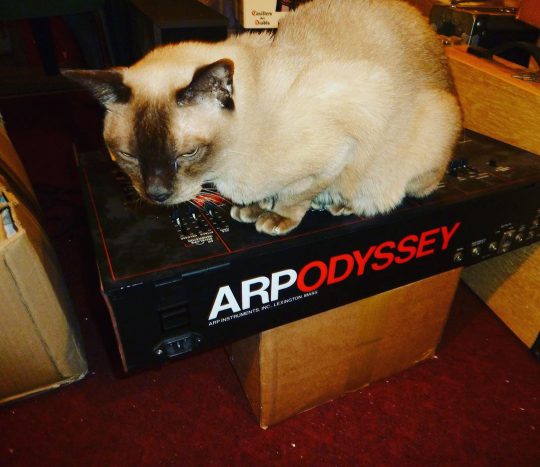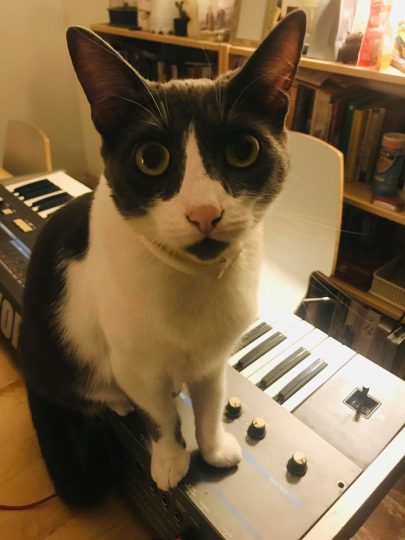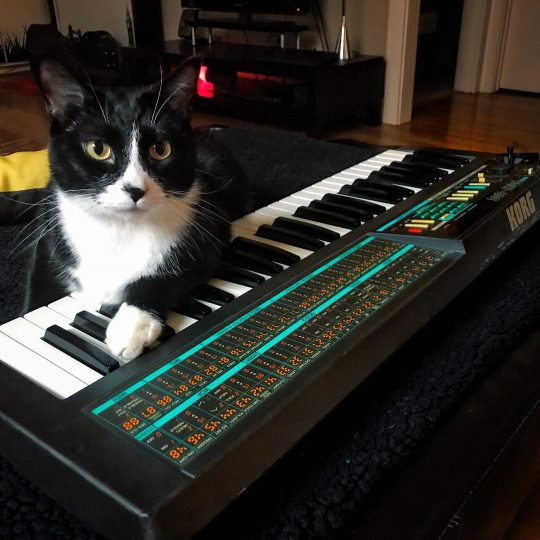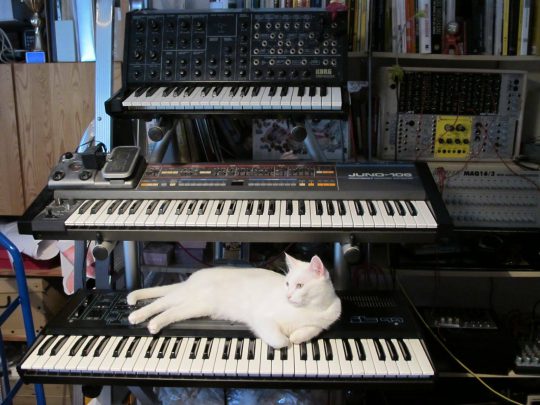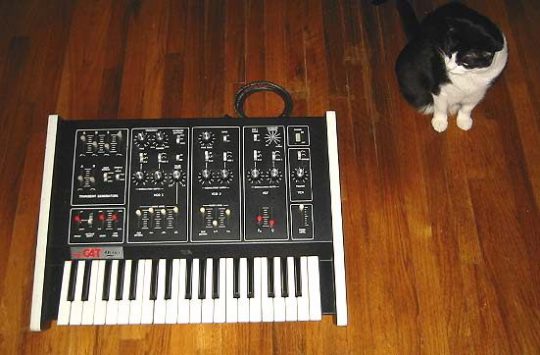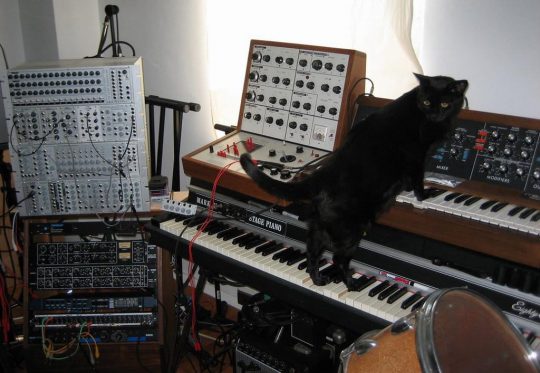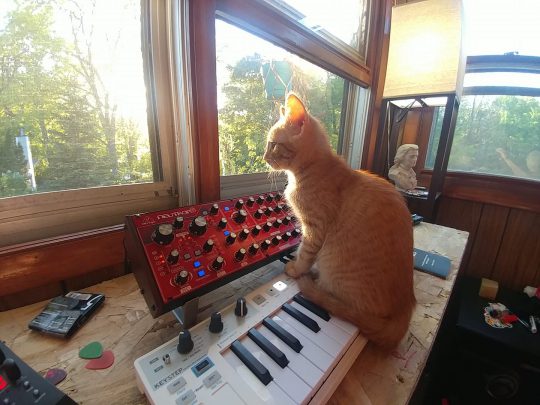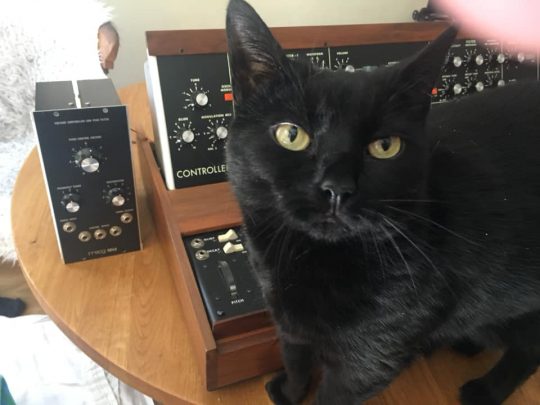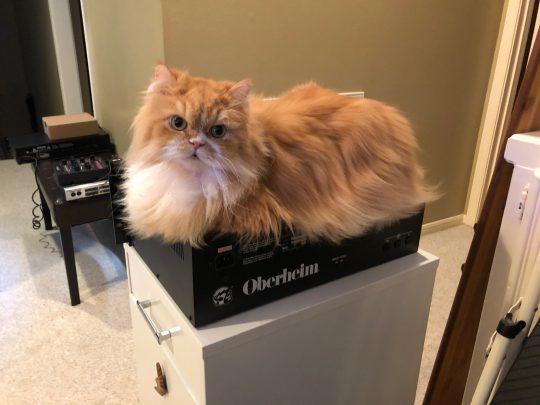
Yogi found a nice place to sit atop an Oberheim Matrix 6R rack-mount synth module. By Sayer Seely via Facebook.
The 6R is the rack-mount module version of the classic Oberheim Matrix 6 from the 1980s.
The Matrix 6 was one of the last few synthesizers from Oberheim to come out during the mid-eighties following the classic OB-series. The Matrix 6 utilized high-tech but less expensive digital and midi features and still retained a totally analog sound. It did this by using DCOs (digitally controlled oscillators) to provide stability, programmability and more. All the Matrix synthesizers featured Matrix Modulation which allows for extremely wild virtual patching for almost unlimited range of sounds and modulation capabilities!
http://www.vintagesynth.com/oberheim/mat6.php

